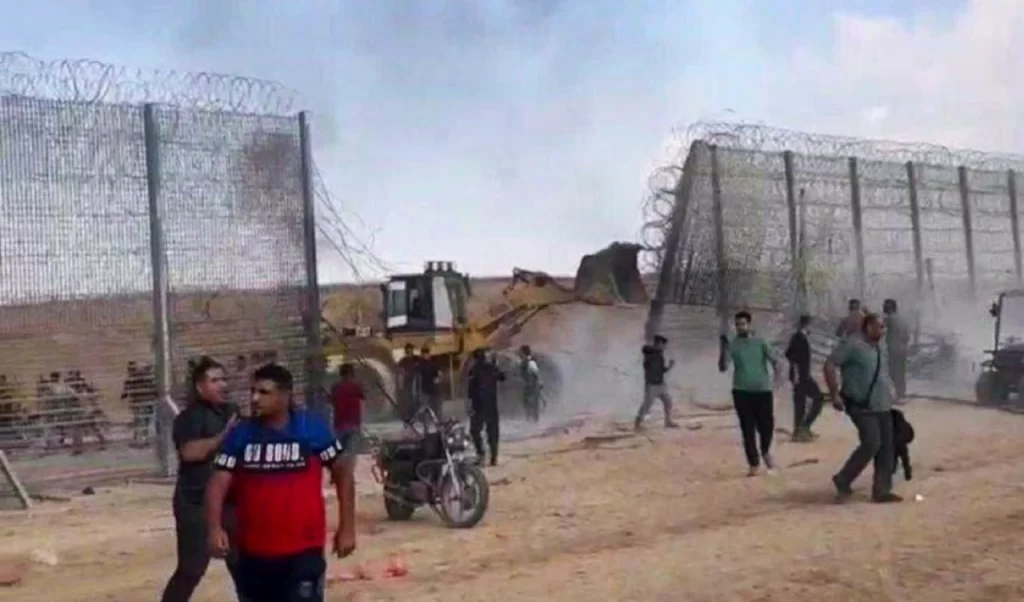Both the Russia-Ukraine conflict and the Hamas-Israel confrontation, which are currently occurring, have highlighted the utility of land mines at a time when the world seeks to outlaw them.
A landmine is an explosive device designed to be buried underground, laid on the ground, or put close to the earth’s surface or another surface and to detonate in response to the target’s presence, proximity, or direct impact.
Mines can be manufactured in large quantities or crafted by hand. Homemade mines can be fashioned from shells, aerial bombs, other types of ordnance, explosive charges, and other destructive components. Landmines don’t cost much and can be planted almost anywhere.
There are two types of landmines: those that kill people and those that destroy vehicles. In the last few decades, both have caused a lot of pain. An international agreement called the Mine Ban Convention, signed in 1997, says that anti-personnel landmines can’t be used, stored, made, transferred, or used against people. The purpose of anti-personnel mines is to maim, not kill. More than 150 countries have signed this treaty. The UN and aid groups have asked all countries to set rules for how anti-vehicle landmines can be used. These kinds of weapons continue to kill many people, mostly bystanders. They make it hard for people and relief aid to move around, make land unfit for farming, and keep people from getting water, food, medical care, and trade.
While the Ukrainians, with help from high-tech equipment from the West, lost many soldiers and pieces of equipment trying to break through the heavily mined Russian defence line, the Hamas assault troops went several kilometres on foot, in pickup trucks, or by truck. Strangely, the rave event, not the minefields, slowed Hamas’s move towards Sderot and Ashkelon, even temporarily.

That being said, why are there no minefields near the border with Gaza? Israel doesn’t have General Sergey Surovikin to make an effective ‘mine field’?
The response may be straightforward. In recent years, Israel’s perception of Hamas has shifted to view the organisation as something behind the border that is annoying but not frightening. Consequently, a strategy was developed that predicted the Israeli army would be more likely to attack than defend itself.
The Israel Defence Forces (IDF) said on October 10 morning that they had finally taken back control of their suddenly open border with the Gaza Strip. This came 72 hours after Hamas terrorists broke through parts of the barrier and started an invasion that killed or kidnapped over 1,000 Israelis.
The IDF said they had successfully sealed the border and mined the regions around the breaches to prevent further infiltration. So far, there is no evidence of HAMAS being blown up by mines, and the Israeli move can be called effective.
The Russians, on the other hand, used mines right from the beginning. The Russian military did indeed mine the fields in the Northern Military District zone, and they did so effectively and competently. In addition to that, mines undergo consistent replenishment through the use of remote mining technologies.

The Ukrainian counteroffensive has been stalled at the same spot it began around five months ago due to mines laid by the Russian military. Chief Intelligence Director of the Ukrainian Defence Ministry Kyrylo Budanov stated in an interview with the War Zone portal that the number of armoured vehicles used on the battlefield has significantly fallen on nearly all key fronts. This is because anti-tank mined fields and First Person View (FPV) kamikaze drones, capable of wreaking havoc on expensive equipment, are abundant.
Armoured vehicles, as stated by Budanov, are used in the process of evacuating civilians as well as providing infantry forces with quick mobility. They are not involved in any of the confrontations that are taking place. It is reasonable to deduce that the armoured vehicles deliver the soldiers to their specified areas, leaving them to fend for themselves. The strategy is not working for the Ukrainians.
The Allies had provided the Ukrainian Armed Forces with specialised equipment for mine removal. The Ukrainian armed forces attempted to employ it. However, the mines quickly damaged the equipment.
The Ukrainians use special shells consisting of a rope containing explosives. The ammunition is discharged into the minefield, which results in the creation of a corridor that is around 30–40 metres wide. The subsequent corridor is subsequently used to assault the Russian fortifications. However, assaulting Russian positions while navigating confined spaces is not simple. The Ukrainian air force is significantly inferior to the Russian air force, rendering Ukrainian troops vulnerable to Russian artillery and aviation.
It is safe to say that Ukraine is the most densely mined country in the world because mines and tripwires blanket nearly one-third of its territory.
Israeli infantry, battle tanks, and other armoured vehicles have not yet rolled out into Gaza for a counterattack, but when they do, it will be intriguing to see if Hamas has learned anything from the conflict in Russia and Ukraine. Previous Israeli operations in the region were met with violent resistance from Hamas. Mines and guided missiles are among the several anti-tank weapons that Hamas possesses.
